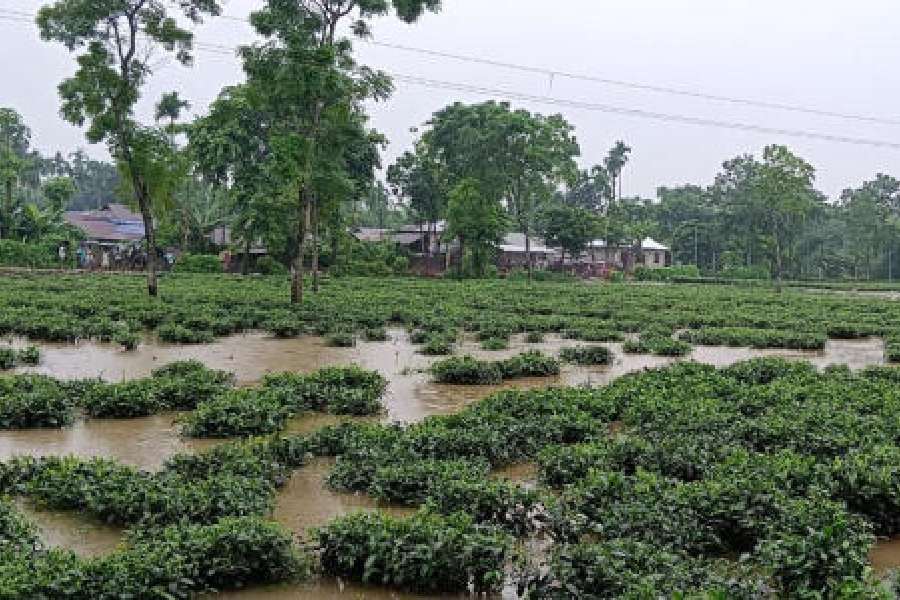Inclement weather conditions since the beginning of the current tea season affected production and led to a loss of over 20 million kilos till May this year.
Those associated with the industry are apprehensive that the loss might increase because of excessive rain which flooded stretches of tea plantations, especially in the Dooars.
“The production figures reflect a precarious state of affairs, consequent to the constant onslaught of insufficient rainfall since the beginning of the season. Till May this year, the north Bengal tea belt had suffered a loss of over 20 million kilos vis-a-vis the production figures of the corresponding period of 2023,” said Prabir Bhattacharjee, the secretary general of the Tea Association of India (TAI).
According to the data available with the Tea Board, in 2023, 89.95 million kilos of tea were manufactured from January to May. This year, however, the total production till May was 68.37 million kilos, which means a shortage of 21.58 million kilos of tea.
According to Bhattacharya, after the dry spell,
those associated with the industry were hopeful that the pre-monsoonal and monsoonal rains would help the gardens recoup the losses in production.
“However, an abnormally high rainfall led to a miserable situation in the gardens, The rivers and streams swelled and inundated tea plantations. In some places, stretches of plantations were eroded. The excessive rainfall has become a new poser for the industry,” he added.
In north Bengal, especially in the districts of Alipurduar, Jalpaiguri and Darjeeling, the southwest monsoon brought more showers this year.
The data furnished by the regional Met office in Calcutta show it rained 95 per cent more in Alipurduar district. Jalpaiguri and Darjeeling districts received the excess rainfall of 55 per cent and 49 per cent, respectively, from June 1 to July 7.
From March 1 to May 31, there was a shortage of rainfall ranging from 50 per cent to 80 per cent in these areas.
“Earlier, it was the scorching sunshine which lowered the yield of tea bushes. And now, excess rainfall with lack of sunshine has hampered the production,” said a tea planter, while adding that they have suffered losses during the first and second flush, which are the best quality teas produced in a year.
In Alipurduar and Jalpaiguri, a number of tea gardens have been flooded. For example, the Nonai and Kalkut, two streams flowing through Alipurduar, spilled over the banks and flooded the plantations of the Majherdabri tea estate.
“As it is raining these days, we can’t carry out pest control works. There is an apprehension of pest attack. Added to it, tea bushes have been affected by flash floods,” said Chinmoy Dhar, manager of the garden.
Some other gardens like Mechpara, Central Dooars, Aryaman, Tulshipara, Dhumchipara and Joy Birpara have also been affected due to the rainfall, he said.










